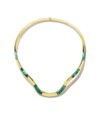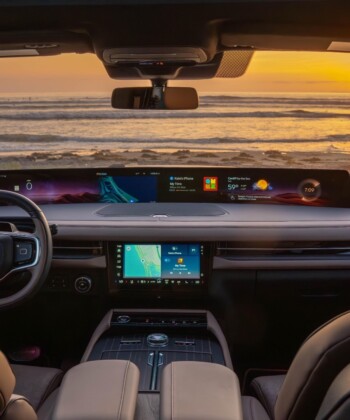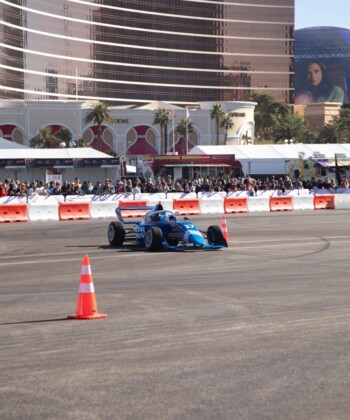Like our smartphones, social media accounts and even refrigerators, autos are finding their place among the hyper-connected Internet of Things. At the same time, as our living spaces evolve to include more green space and pedestrian walkways, auto manufacturers are re-envisioning how we’ll be getting around the cities of tomorrow. During the 2013 Tokyo Motor show last November, in a remote wing of the Tokyo Big Sight Event Center tucked away from the usual hubbub and media frenzies standard at any auto show, Japanese manufacturers presented their vision for the coming decades—and the future looks both closer and more foreign than ever. Smart Mobility City, a consortium between Toyota, Honda, Nissan, Mazda and Mitsubishi, proposes solutions to congestion, pollution and pedestrian fatalities in the form of alternative fuel sources (electric, hydrogen); assisted, or even fully automated, drive vehicles; and personal mobility cars perfect for short-range commutes.

The Tokyo Motor Show
For the Japanese, historically our planet’s most tech-savvy, earliest adopters, it may be a foregone conclusion that this is where things are headed, but back in North America, what was proposed in Tokyo still seems like the stuff of science fiction or straight out of a Syd Mead painting, with globular vehicles that think for themselves and talk to each other, flowing smoothly and quietly through the city. These nimble pods are part car, part motorcycle, dancing through density. According to Jim Pisz, corporate manager of North American business strategy at Toyota, tomorrow may not be that far off, even stateside. The i-Road, Toyota’s three-wheeled update on the micro car that debuted at last year’s Geneva auto show, is ripe for pilot programs in “campus” communities, such as Florida retirement developments or gated neighborhoods, where golf-cart culture has already taken hold. And with the success of alternative transportation solutions like New York City’s Citi Bike program, Pisz is optimistic that the i-Road and its more aggressively designed successor, the FV2, will begin to be integrated in American cities within the next decade.

Toyota’s i-Road
I had a chance to drive Toyota’s i-Road at the company’s secret proving grounds. Though I was fully expecting an anesthetic experience that paled in comparison to driving a full-size auto, this tiny car—can we even still call it that?—was zippy, pairing the secureness of a closed-cabin vehicle with the maneuverability, especially when leaning into a curve, of a motorcycle or scooter. Which means though our roads are changing, the fun of driving will not. The i-Road and similar vehicles currently in development, such as Honda’s Mc-beta and BMW’s i3, are meant to reduce pollution and congestion, but not at the expense of an enjoyable trip. It’s unlikely that your SUV will go the way of the woolly mammoth anytime soon, but the days of driving it downtown may numbered.
MORE:
Test Driving the 2014 Maserati Ghibl
Rising Son: The Rebirth of Lexus
Unexpected Editions to the EV Market









































